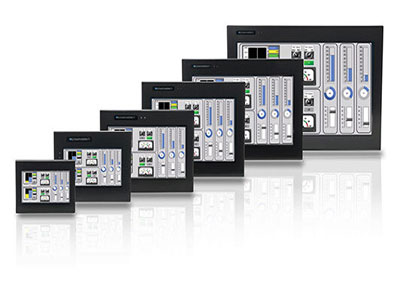What Are The Basics Of HMI?
Key Takeaway
The basics of HMI, or Human-Machine Interface, revolve around how operators interact with machines to control and monitor processes. An HMI acts as the bridge between a user and a system, providing real-time data and visual controls. Through graphical displays, touchscreens, or keyboards, operators can view system statuses, input commands, and respond to any issues.
HMI systems are designed to be intuitive, offering clear representations of machine operations. They simplify the control process by replacing manual dials and switches with digital interfaces, making it easier for operators to manage complex machinery. HMIs also improve decision-making by providing instant feedback, allowing quick adjustments to keep operations running smoothly.
Definition of HMI
Human Machine Interface (HMI) refers to the interface that facilitates communication between a human operator and a machine. It can take many forms, from a simple keypad to a sophisticated touchscreen display. The purpose of an HMI is to provide operators with an intuitive way to control machines, monitor their performance, and troubleshoot issues in real-time.
In industrial settings, HMI systems allow operators to manage complex machinery like robots, production lines, and monitoring systems with ease. Through an HMI, an operator can see real-time data about machine status, such as production speed, temperature, or pressure, and make adjustments without needing to directly interact with the machine. Essentially, an HMI serves as a bridge between the human mind and machine processes, simplifying complex operations and enhancing productivity.

Components of HMI Systems
An HMI system is composed of several key components, each playing a vital role in the interaction between humans and machines. The most visible component is the interface hardware, which is usually a touchscreen, buttons, or a control panel. This is the point where the operator inputs commands or receives data. The hardware needs to be durable and user-friendly, especially in industrial settings where environments can be harsh.
Another essential component is the software that processes the data collected from the machine. The software is responsible for interpreting input from the operator and displaying real-time data from the machine, such as performance metrics and error messages. The final critical component is the communication protocols, which allow the HMI to communicate with the machines and systems it controls. These protocols ensure that data flows seamlessly between the machine and the operator, allowing for smooth operation and quick troubleshooting.
You May Like to Read
How HMI Works
The functionality of HMI systems relies on a combination of hardware and software to create a user-friendly interface for managing complex machinery. When an operator inputs a command through the interface, the HMI processes this command and sends it to the machine for execution. The machine then adjusts its operations accordingly, whether that means increasing speed, adjusting temperature, or shutting down a system.
At the same time, the HMI receives real-time data from the machine, which is displayed on the interface. This could be anything from system health to production metrics, and it provides operators with the necessary information to make informed decisions. For example, in a manufacturing plant, if the machine starts operating outside of the specified parameters, the HMI will alert the operator, who can make immediate adjustments. This continuous flow of data between the machine and the operator ensures that operations run efficiently and safely.
Types of HMI Systems
There are several types of HMI systems, each designed for specific applications and levels of complexity. The simplest form is a push-button interface, where operators interact with machines through basic controls like buttons and switches. These are often found in older or less complex systems but still serve an important role in many industries.
More advanced systems include graphical HMIs, which feature touchscreens and provide a more detailed visual interface. These are commonly used in industries like manufacturing, where operators need real-time data and easy control of machinery. The most sophisticated HMIs are often PC-based systems, which offer the highest level of control and functionality. These are used in complex environments like power plants or large-scale manufacturing facilities where operators need to manage multiple systems simultaneously, and advanced software capabilities are required.
Key Applications of HMI
HMI systems have widespread applications across numerous industries. In manufacturing, HMIs are essential for monitoring production lines, controlling machinery, and ensuring safety. They allow operators to manage everything from robotic arms to conveyor belts through a single, unified system. Real-time feedback and control make them invaluable for keeping operations running smoothly.
In healthcare, HMIs play a critical role in managing life-saving devices like ventilators, dialysis machines, and patient monitoring systems. Medical professionals rely on HMI to track patient data and make precise adjustments to treatment settings. HMIs also have applications in smart home systems, allowing users to control lighting, temperature, and security through simple touchscreens or mobile apps.
Another major application is in energy production, where operators use HMI to monitor systems like power plants or wind turbines. These interfaces help manage complex systems with precision, ensuring efficiency and safety in operations that require high levels of control. As technology evolves, HMIs continue to expand their presence in industries that require automation and real-time data monitoring.
Conclusion
The basics of HMI lie in its ability to facilitate smooth interaction between humans and machines, providing operators with the tools to control complex systems easily. With key components like interface hardware, software, and communication protocols, HMI systems simplify industrial processes by offering real-time data and actionable control. Whether managing a factory floor or adjusting a medical device, HMI enables efficient, safe, and streamlined operations across various industries.
As you become more familiar with the types and applications of HMI, you’ll begin to appreciate how critical these systems are in modern industry. They don’t just make life easier for operators; they significantly improve efficiency, safety, and productivity. Mastering the basics of HMI is a stepping stone to understanding more advanced automation technologies and their roles in shaping the future of industries worldwide.
